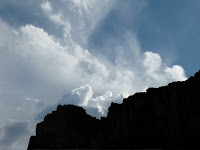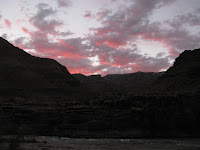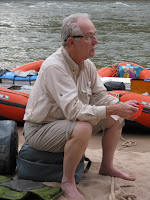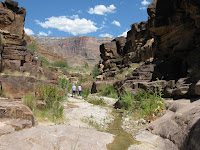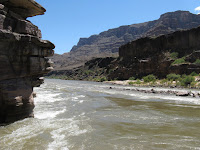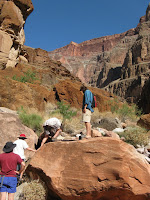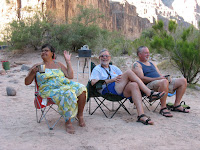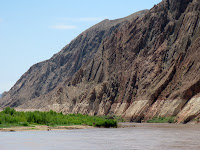




MILE 297
The jet boat takes about 45 minutes to make the trip from Pearce Ferry Rapid to South Cove. Once this would all have been on the lake, but now the top section is the reformed river, running muddy through old lake bed. And as the lake continues to fall, some interesting new rapids are forming in Iceberg Canyon, which made our ride fun and probably adds some tricky wrinkles to the already complicated end-of-trip logistics for the raft companies.
We landed at a the dock at South Cove, dragged our stuff up the trail to the parking lot, and loaded it onto the trailer. There were cold pops and Subway sandwiches waiting for us and we ate them in the air conditioned van as we hit the road for the five hour trip to Flagstaff.

















